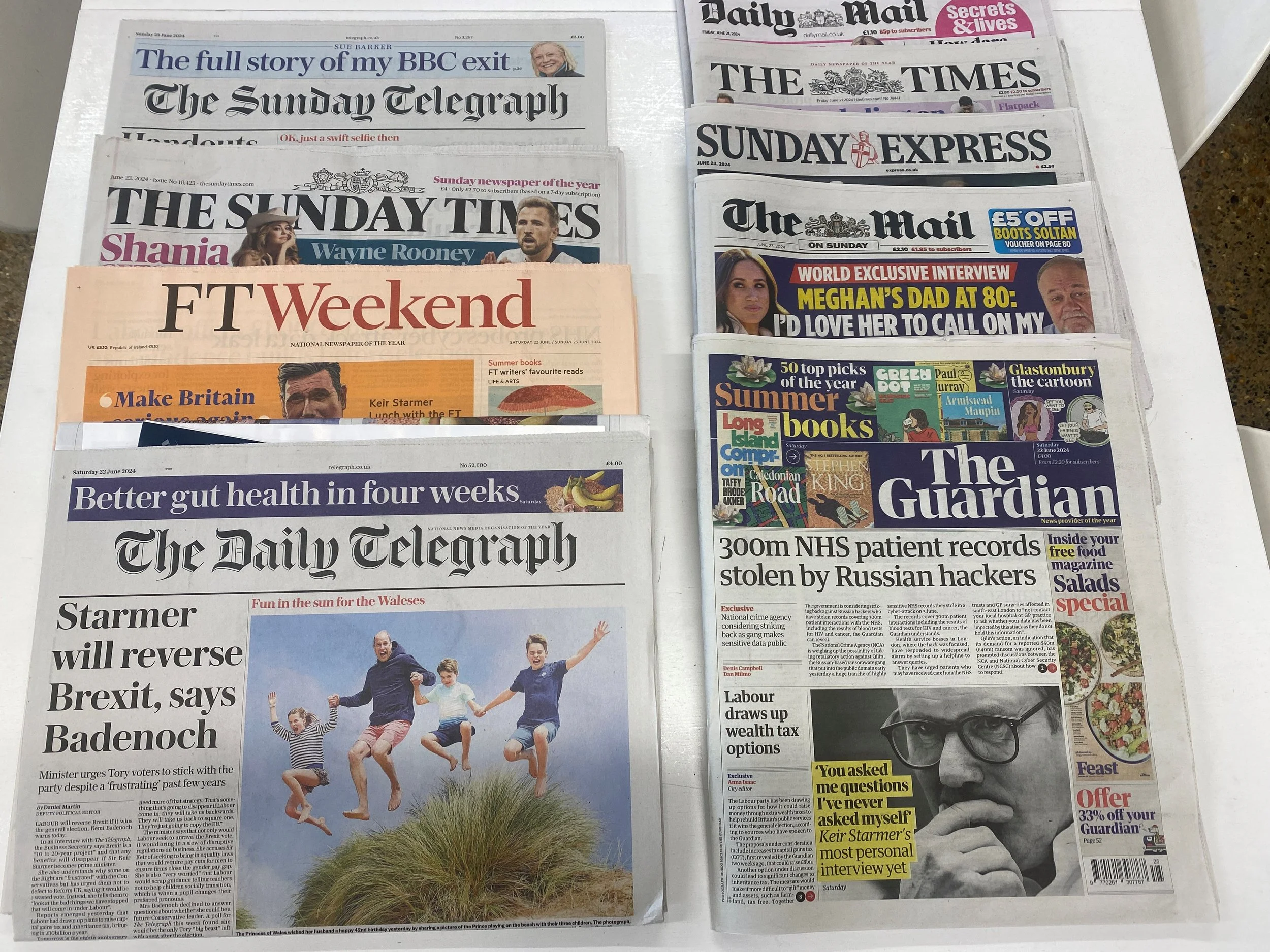The Press Landscape in Election Year
In 2024, globally, more voters than ever in history will head to the polls, with nearly half the world’s population voting in a major election.
There is a total of 64 expected elections taking place this year – with an election likely in the UK, as well as in the US, Russia, India, South Africa and many more.
As the UK gears up for another pivotal election year, the media will become an increasingly important forum for ideas, narratives, and political agendas. In a digital age where information flows rapidly, opinions are diverse and false news is widespread, understanding and engaging with the press cycle is crucial for voters seeking to make informed decisions.
The resurgence of print media
Whilst it’s no secret that the circulation of print media has been in decline for the last decade, traditional media is expected to grow in popularity in 2024.
“Recently, there has been a resurgence of news focused magazines such as ‘Time’, which has had a 13% increase in circulation since 2020.”
Plus, we have seen launches of new political magazines, such as the New European, suggesting that people still appreciate in-depth, thoughtful journalism. As such, traditional media remains a trusted news source and a key platform in driving conversation and shaping public opinion, especially when it comes to electoral debates.
The digital dialogue
“In 2023, TikTok as a news source became much more popular among adults, with 1 in every 10 adults using it to keep up with news – overtaking BBC Radio 1 and Channel 4 for the first time.”
News websites, social media platforms, and digital publications have revolutionised how information is consumed and shared. Significantly, social media commentary from politicians, journalists and the public now play a pivotal role in informing narratives during election periods. Platforms such as X, and increasingly, TikTok, are public arenas for political debate and disseminating news, especially amongst the younger generations.
However, at the same time, the public are increasingly aware of misinformation, especially with the rise of AI generated content which has made people more suspicious of online sources.
The rise of digital media has also seen a growth of video-based networks as a news source, and the increase of visual content. As we get closer to the General Election in the UK, it’s expected that media outlets will turn to audio, visual and short-form video content to summarise political conversations into digestible snapshots.
The influence of broadcast
Television and radio also remain influential sources for political coverage, offering in-depth analysis, interviews, and debates. Channels like the BBC, ITV, and Sky News play an important role in shaping public perception through their election coverage.
Whilst bias and impartiality must be considered, broadcast media continues to be a primary source of information for many voters during election periods, and is likely to seeing growing viewership numbers throughout the year.
The UK media cycle in election years is a dynamic conversation of opinions and voices. Traditional print newspapers, digital platforms, and broadcast media remain influential, but they also face challenges related to bias and misinformation. However, as voters, engaging with press narratives is crucial for creating an informed electorate and democratic media landscape during election periods.
For businesses and PRs planning their media strategies, it is paramount to consider how the changes brought about with an election year will alter the press cycle and how best to utilise the increased noise to their benefit.

